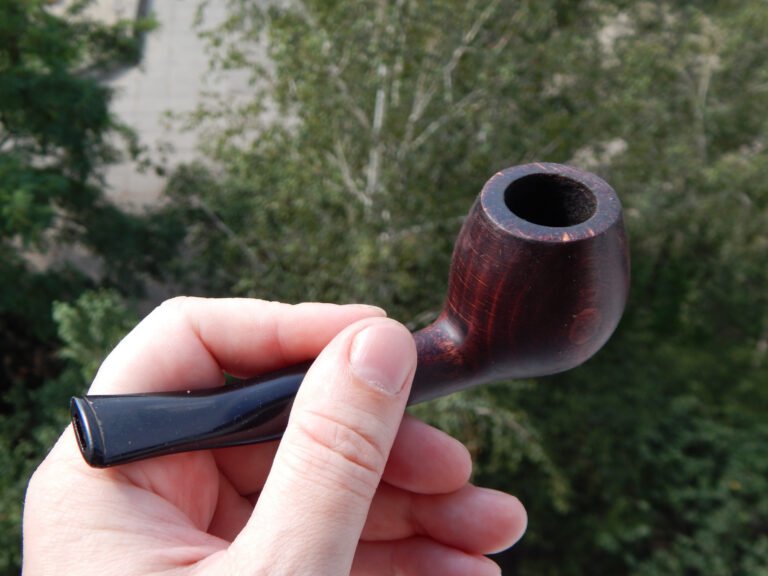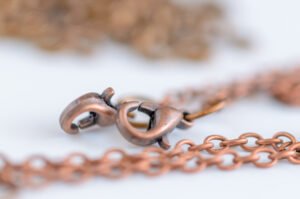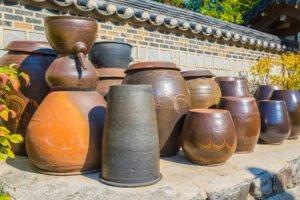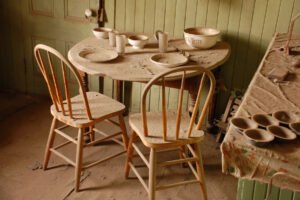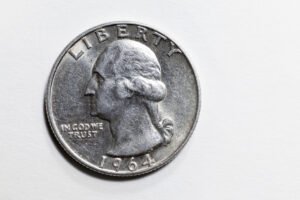If you’re an avid collector, trust me, you must add a vintage tobacco pipe to your collection! Not only do these old pipes reflect ancient art, but they also serve as royal relics for today’s collectors. All thanks to their fascinating shapes and valuable materials that are rare today.
Besides, envisioning the hands that once held these pipes and the conversations they might have heard will leave you pondering! So, let’s begin this journey to the history of antique tobacco pipes to identify important features and prices in today’s markets!
Takeaways
- Old handmade tobacco pipes with unique engravings or painted decorations are highly valuable.
- Look for specific features and logos to spot the branded antique tobacco pipes. These can hike the price of your old pipes.
- Tobacco pipes made of meerschaum, porcelain, and briar are one of the most valuable collectibles.
- You can also repair used, good-condition vintage pipes to hike their prices.
Identifying An Antique Tobacco Pipe (Key Features)

The smoking pipes we see today are very polished and flawless. But centuries ago, when tobacco pipes were handmade, they had quite a few visible features like uneven stem thickness and rough surfaces.
But some really old tobacco pipes can also be burnished or glazed. In that case, you can look for these special features:
- Long and thin stems
- Designs like rouletting, fluting, and milling on the stem
- Molded faces and figures or bowls
- A dark patina on the stem and bowl’s surface
- Signs of tobacco ashes or char inside the bowl
- Tobacco aroma
- Common materials like clay, porcelain, or meerschaum
History & Evolution of Tobacco and Smoking Pipes
Smoking pipes have been a trend for centuries. But tobacco pipes first became popular in the mid-1500s in Europe. The oldest pipes were mostly made of ‘Kaolin’ or ‘China Clay,’ which was a dense clay and became really hot during smoking. They were also very delicate.
It was during the 18th century that tobacco pipes underwent a huge change after makers began using meerschaum and porcelain. The pipes were now made in a unique shape with a large chamber and bowl and had hand-carved intricate designs.
Then came the briar wood pipes, which became even more popular among smokers. Thanks to their pleasant texture and heat resistance, briar pipes are valuable even today.
The 20th century brought many new materials and designs which turned tobacco pipes into a form of art. However, in the later years, smoking pipes gradually became less preferable with the rise of cigarettes. This makes those old, artistic pipes one of the popular collectibles today!
Types of Vintage Tobacco Pipes with Values
Like all ancient items, tobacco pipes underwent many changes regarding materials, mechanism, and shape. This gave us the following types of antique tobacco pipes:
1. Straight Tobacco Pipes

The most traditional smoking pipes, straight pipes, can be identified with their simple design and mechanism with a straight stem and a rounded bowl. These pipes can further feature one single material for the whole pipes or two or more materials for different parts.
2. Bent Smoking Pipes

As the name implies, these pipes feature a curve in the pipe stem near the bowl. The 1/4 or 1/2 bend collects moisture and offers a dry smoking experience. Bent pipes can be priced at around $50 – $100 based on their materials and age.
3. Gourd Calabash Pipes
These pipes feature a stem made from dried calabash gourd and have a bowl attached with a meerschaum lining or a meerschaum bowl altogether. These are popular for their fully bent, U-shape stem and wide-mouthed, cone-shaped bowl.
Calabash pipes are often associated with Sherlock Holmes, making them really valuable. You can find them between $40 – $190.
4. Falcon Tobacco Pipes
You can spot these pipes with a detachable briar bowl and a metal stem that has a moisture trap. This design and mechanism make the pipes easy to clean. Besides, smokers can even attach different bowls to the stem.
5. Churchwarden Pipes
These tobacco pipes can be spotted by their long pipes, which can go up to 16 inches. These pipes were popular among readers and authors for their easy holding. You can look for unique carvings or logos to hike the price. Generally, they cost up to $100.
6 Factors to Identify & Value Antique Tobacco Pipes
Apart from the types of old tobacco pipes, other factors, like age, material, and brand, also impact the costs. Let’s see how!
1. Tobacco Pipe’s Manufacturing Date & Age

Usually, the older the item, the more antique it’s considered. But in the case of tobacco pipes, the oldest ones were made of clay, which was delicate and damaged with time.
Then came the Meerschaum and porcelain pipes in the late 17th and early 18th century, which are one of the most expensive ones to date!
Does tracking your smoking pipe’s age stress you? Check out these cues:
17th Century Tobacco Pipes
Although rare to find, these pipes were mostly made of clay featuring a thin and straight 6-12 inches long stem. You can also see shallow bowls with thick walls. Also, look for a heel at the base of the bowl and rouletting, milling, or incised lines on the stem to hike the price.
The 1660s – 1780s Tobacco Pipes
These pipes can be spotted by their medium-length straight stems with a broad end near the bowl. Stem bores of 6/64” to 5/64” were also common in these pipes.
You can also expect to see elongated bases with a spur at their bottom. Look for special features like rim milling for a unique pipe.
1790s – 1850s Pipes
If you notice stem bores of around 5/64” to 4/64”, it’s likely a tobacco pipe from the late 18th century or later. You can also expect to see molded marks or pattern numbers on the stem’s sides. Besides, most of the pipes from this era feature upright, cylindrical bowls.
Late 18th Century and Later Tobacco Pipes
This era was of short-stemmed pipes. You can also spot the tobacco pipes from this period with their shorter bowls with common molded decorations. New, different stem shapes also make them less antique.
2. Materials

Pipe material is the second most important factor that impacts the overall price of an antique tobacco pipe. Out of all the different materials, real meerschaum and briar pipes are the most expensive, costing up to $1,000 or more.
But, if you are just stepping into the hobby, you can look for a cheap yet good pipe, like a regular corn cub or wood pipe, which can be priced around $10-45.
Here’s a quick table to estimate the prices of different pipe materials:
| Tobacco Pipe Materials | Estimated Price (For Common Pipes) | Estimated Price (For Branded/Special Pipes) |
| Corn Cub | $7 – $50 | $70 – $150 |
| Clay | $30 – $50 | $50 – $100 |
| Porcelain | $40 – $100 | $100 – $300 |
| Briar Wood | $40 – $150 | $190 – $1,000 |
| Calabash | $100 – $280 | $300 – $900 |
| Meerschaum | $100 – $300 | $1000 – $2,500 |
| Metal (brass, silver, or aluminum) | $50 – $170 | $200 – $1,000 |
Look for valuable details like silver or gold linings to hike the price of your old tobacco pipe.
3. Antique Tobacco Pipe Brands

If you want to add a lavish, expensive vintage smoking pipe to your collection, look for a Dunhill or Peterson smoking pipe. You can also look for pipes with rarer materials or shapes from these brands to hike the price even more.
Below are a few antique tobacco pipe brands you can explore:
| Antique Tobacco Pipe Brand | Key Features | Average Value (simple as well as unique designs) |
| Dunhill | A white spot on the stem | $100 – $700 |
| Peterson | System Pipes with a moisture reservoir | $100 – $500 |
| Barling | High-quality Briar pipes with elegant shapes and craftsmanship | $90 – $300 (up to $1,000 for rare designs) |
| Comoy’s | A distinctive three-piece “C” logo on the stem | Up to $600 |
| Charatan | Briar pipes with freehand designs, a CP logo on the stem | $100 – $600+ |
4. Rarity of Pipes

We know that branded antique smoking pipes are expensive. But even a regular pipe made of rare wood and finished with a unique logo or carving can fetch you thousands of dollars.
So, look for distinctive pipe material like bone and ivory and unique bowl shapes, like ducks, wolves, faces, etc., to spot a rare tobacco pipe.
Below are a few rare tobacco pipes you can look for:
| Tobacco Pipes | Brand | Average Price |
| African Tribal Art Terracotta and Bone pipe with Elephant Bowl | N/A | $1,000 – $1200 |
| Rare White And Russet Jade Carving Of Tobacco Pipe. Qing Dynasty | N/A | $450-$550 |
| Bbb 1898 Museum Quality Cased Long Billiard Estate Pipe W/Amber | BBB | $700 – $800 |
| Dunhill Rare 1926 Patent Shell Magnum Bent Billiard Estate Pipe | Dunhill | $2,500 – $2,600 |
5. Pipe’s Bowl Shape

A tobacco pipe’s bowl shape and design impact its price. But that’s not all. It can also help track the age of the pipe. For instance, if you spot a tobacco pipe with a taller, narrower bowl, it may be a highly valuable 17th or 18th-century pipe.
But if the bowl is shorter or wider, the pipe may date back to the 19th century, costing 5% – 10% less.
6. Old Tobacco Pipe Condition
Of course, old handmade clay tobacco pipes are the real antiques, but being extremely delicate, they didn’t last long. Although the later porcelain, meerschaum, briar, and metal pipes were sturdy, you can still see the signs of wear and usage.
So, look for tooth marks near the outer end of the stem, burn marks on the bowl, and a yellow-brown patina to track the pipe’s age. Where a little bit of burning marks is okay, an extensively burnt bowl wouldn’t be worth a lot.
Used pipes, also called Estate tobacco pipes, with historical significance can get you valuable returns.
Why are old pipes so long?
Longer stems allowed more tobacco consumption and limited, cooler, and more comfortable and pleasurable smoking experience. This makes these pipes more valued even today.
What are the oldest tobacco pipe-making brands?
Dunhill, Chacom, Peterson, Chartaran, and BBB are some of the oldest tobacco pipe brands. Vintage pipes from these brands with rare designs and material or gold or silver bands can fetch returns of up to $750.
How to clean a vintage tobacco pipe?
You can clean the used tobacco pipe by soaking it in a mild detergent plus water solution overnight. Then scrub the stem using a brush, and when dried, sand it with 800-grit sandpaper using water, and then wash it. To clean the bowl, use a reamer to scrape the solid layer of burnt tobacco and char, empty the residues, and wax the bowl.
One thing is for sure: it’s not just huge items like old pianos or furniture that fetch hundreds and thousands of dollars. In fact, even small collectibles like vintage tobacco pipes are worth a lot. You just need to spot the right features and appraising points as given above.
So, we hope you can now find the right value for your old tobacco smoking pipes. If you need more insights on identifying and valuing more small antiques, check out our informative blogs on antique cufflinks and buttons!

